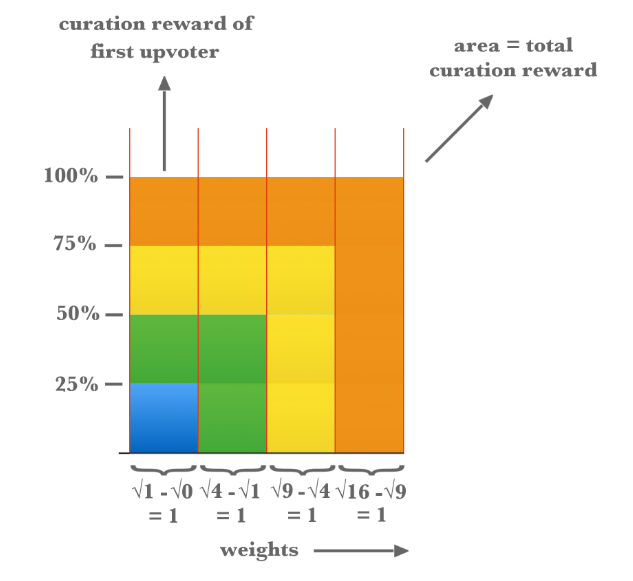RE: Witness consensus status to fix the actual steem’s economic flows (ENG)
Hey @blocktrades and @beshadow I was reading through these comments and just randomly thought I would drop in and give a few thoughts.
I also had a ton of questions as far as curation rewards are concerned, especially post HF20.. Right after the fork, I spent a lot of time testing and scratching my head on exactly how curation rewards work on the blockchain and how you can predictably measure your earnings and potential earnings given a set of different variables and circumstances.
I happened upon a discovery that made me so happy... It's a post made by @miniature-tiger. Although it was made 1 year ago, most of it still applies (except for the window being 15 minutes now instead of 30). I recommend you go check it out, it gets pretty technical, but I have yet to see anyone explain and distill it in such an easy to understand way as miniature-tiger does! (https://steemit.com/curation/@miniature-tiger/an-illustrated-guide-to-curation-from-the-simple-to-the-complex-with-real-examples-from-past-posts-part-2)
Here's an excerpt that I think may help answer your original question:

The left hand column (anchored by the blue square) represents the amount of the curation rewards for the curation hound. Each area the size of the blue square is $0.25 worth of curation rewards, generated by $1.00 of upvote. For each successive colour it makes no difference to this example whether one upvoter adds all of the additional post payout or whether it is split between a large number of upvoters.
The milestone increases in curation that we are aiming to derive are as follows:
- Blue: The curation hound adds the first $1.00 to the post payout and at this point would receive all of the curation rewards of $0.25. Their curation weight is √1 - 0 = 1 (the curation weights are based on rshares in practice but here we have scaled them down to the level of the upvotes for simplicity).
- Green: The post payout needs to increase to 4x the original upvote in order for the reward paid to the curation hound to double from 25% of upvote to 50%. At this point the post payout is $4.00, the total curation reward is $1.00, and the weight share for the first upvoter is 1/2 giving a curation reward of $0.50.
- Yellow: The post payout needs to increase to 9x the original upvote in order for the reward paid to the curation hound to treble from 25% of upvote to 75%. At this point the post payout is $9.00, the total curation reward is $2.25, and the weight share for the first upvoter is 1/3 giving a curation reward of $0.75.
- Orange: The post payout needs to increase to 16x the original upvote in order for the reward paid to the curation hound to quadruple from 25% of upvote to 100%. At this point the post payout is $16.00, the total curation reward is $4.00, and the weight share for the first upvoter is 1/4 giving a curation reward of $1.00.
These figures are intuitive once we consider that the curation reward curve is a square root curve such that each linear increase in curation rewards requires the square of that increase in post payout.
I hope that helps! This obviously gets a lot more complicated as other voters/curation window get added to the mix, but I've run some field tests and have found the calculations to be both useful and on target.